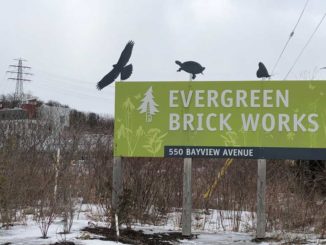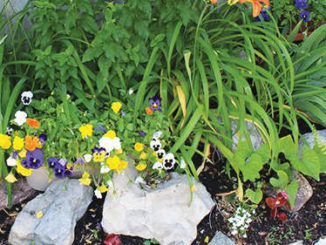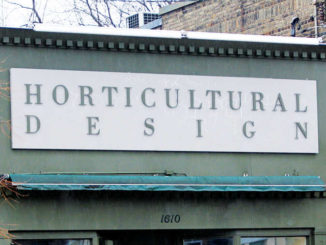Since my August column in Leaside Life, Container Gardening- Growing up to cool us down!, I asked a few friends with condos in Leaside why so many balconies are empty. Their response? “It’s too windy, hot, dirty, noisy, a lot of work, difficult to dispose of expired plants, and repeating the same process every year is just too expensive.
All so true and yet I also know that plants can minimize these problems, too. They can buffer wind, cool your balcony, collect city dust, and muffle noise. If you plant perennials, they do even more because they save you work and money.
Right now in my back garden, I have over 50 filled containers. If they were filled with annuals a few times a year I’d be broke and exhausted. Instead, 40 are filled with “permanent” plantings of hardy evergreens and perennials that come back year after year.
For all of you with small or standard balconies that you’ve given up on, left empty or turned into bicycle storage, I’m hoping to inspire you to try a perennial container or two.
Carla Rose of Davenport Garden Centre on Bayview has been aware of this “empty balcony syndrome” for some time now. Though she’s seen an increase in the use of perennial plants in containers, she also knows it’s about informing people on what options exist and how much is being done within her industry to help.
Nurseries and growers have been working on hybridized plants that can tolerate greater extremes. She also works with local growers who field-plant according to our harsh environment or harden off plants longer to acclimatize them. This is a bonus for all gardeners but especially for container gardeners.
Carla knows her plants well and has a long list of hardy favourites for containers.
There’s also a lot of good “how to” information online with step by step instructions for perennial container planting: the importance of soil mix, drainage and winterizing…all of which should be heeded.
Here are just a few of my tried and true tips:
• Leaside is considered a zone 6 for plant hardiness, but for containers, especially on cold and windy balconies or exposed patios, I use plants that are hardy to zone 2 or 3, such as cedars, Alberta spruce, sedums, hostas, lilacs and amur maples. As you understand your microclimate better, you might be able to experiment with zone 4 or 5, but all of my failed experiments have been with zone 5 plants.
• If you want your hardy plant to live on for years, it needs a good start in the right container. Plastic and fiberglass are great for balconies, and even if they’re big you can drag them to a safe location as needed. Just make sure your container is bigger than the original plant pot: at least two inches around the root sides and at least four inches deeper. This will give your new plant something to grow into for a few years.
• Even though it’s September, it’s not too late to give this a try. My advice is, if you get at least three hours of summer sun, try a cedar or two in a two- or three-gallon size. A single Emerald cedar or a couple of globe cedars are an excellent way to test out your environment. They will immediately green up your balcony, offer information about your microclimate, and supply you with winter décor throughout the winter. If they survive, they are bound to inspire you to experiment further.
Here’s to greener balconies in Leaside!





